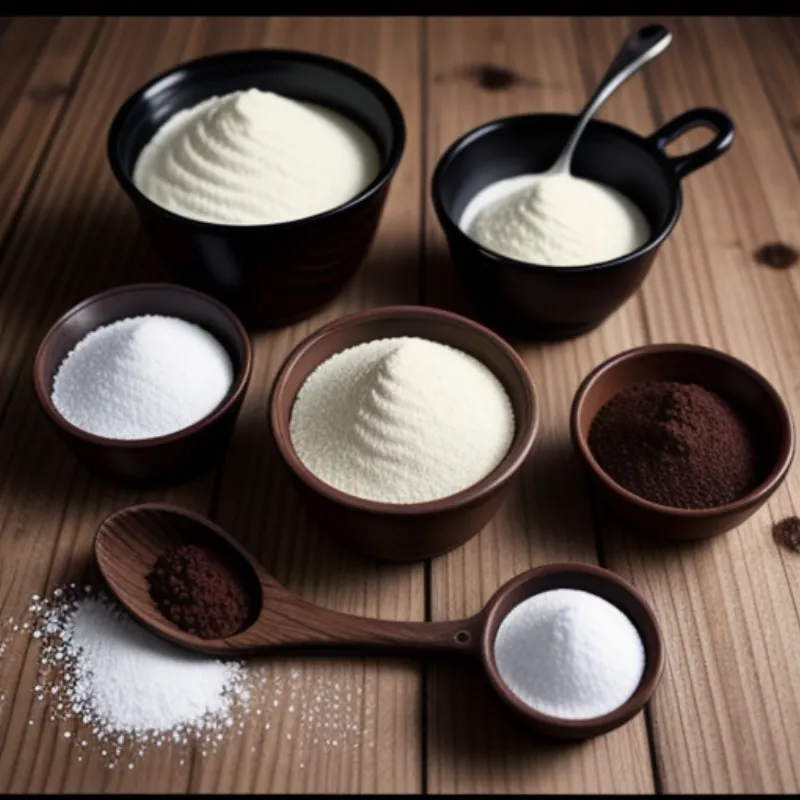There’s nothing quite as disappointing as slicing into a cake only to find it dry and crumbly. We’ve all been there! But fear not, fellow bakers, because today we’re diving deep into the world of moist cakes and uncovering the secrets to achieving that melt-in-your-mouth texture every single time.
Whether you’re a seasoned pro or just starting your baking journey, these tips and tricks will equip you with the knowledge to banish dry cakes from your kitchen forever. From ingredient selection to baking techniques and even storage, we’ll cover it all, so let’s get started!
Understanding the Science of Moist Cakes
Before we jump into the practical tips, let’s take a moment to understand what makes a cake moist. Essentially, it boils down to moisture retention. Cakes are primarily made up of flour, sugar, eggs, and fat, each playing a crucial role in the final product’s texture.
- Flour: Provides structure but can absorb moisture.
- Sugar: Adds sweetness and attracts moisture.
- Eggs: Provide binding, leavening, and moisture.
- Fat: Creates tenderness and helps retain moisture.
The key is to strike the right balance between these ingredients and employ techniques that prevent moisture loss during baking.
Ingredients for Ultimate Cake Moisture
1. Choose the Right Flour
While all-purpose flour works well in many cake recipes, using cake flour can make a noticeable difference in texture. Cake flour has a lower protein content, resulting in a more tender and delicate crumb that retains moisture better.
Pro Tip: If you don’t have cake flour, you can substitute it by measuring out one cup of all-purpose flour, removing two tablespoons, and replacing them with two tablespoons of cornstarch.
2. Embrace the Power of Oil (or a Combination)
While butter adds incredible flavor, using oil in your cake batter, either entirely or in combination with butter, can significantly boost moisture. Oils are liquid at room temperature, which means they don’t solidify as butter does, leading to a moister crumb that stays that way longer.
3. Don’t Skimp on the Sugar
Sugar not only sweetens your cake but also acts as a humectant, meaning it attracts and holds onto moisture. However, it’s important to use the right amount, as too much sugar can make your cake dense.
4. Eggs-cellent Moisture Boosters
Eggs are essential for binding ingredients and adding structure, but they also contribute to a cake’s moisture. Make sure your eggs are at room temperature before incorporating them into the batter for optimal emulsification and moisture retention.
5. Add Moisture Magnets
Ingredients like sour cream, yogurt, applesauce, or even mashed bananas can add moisture and flavor to your cakes. These ingredients work wonders for keeping your cake moist and tender.
 Moist Chocolate Cake Ingredients
Moist Chocolate Cake Ingredients
Baking Techniques for Moist Cakes
1. Don’t Overmix
Once you’ve combined your wet and dry ingredients, resist the urge to overmix! Overmixing develops gluten, leading to a tough and chewy texture. Mix until just combined for a lighter and more tender crumb.
2. Baking Time and Temperature
Baking your cake at the correct temperature and for the appropriate time is crucial. Overbaking is a surefire way to dry out your cake. Use an oven thermometer to ensure your oven is calibrated correctly, and refer to the recipe’s baking time as a guideline, adjusting as needed.
3. The Toothpick Test
To check for doneness, insert a wooden toothpick into the center of the cake. If it comes out with a few moist crumbs attached, it’s ready. If the toothpick is clean, it might be overbaked.
Storing Your Cake for Lasting Moisture
1. Cool It Right
Once your cake is baked, let it cool in the pan for about 10-15 minutes before inverting it onto a wire rack to cool completely. Cooling the cake upside down helps prevent moisture from getting trapped at the bottom.
2. Wrap It Up
To prevent your cake from drying out, wrap it tightly in plastic wrap once it’s completely cool. This will help seal in moisture and keep your cake fresh.
3. Freezing for Future Indulgence
If you want to store your cake for an extended period, freezing is a great option. Wrap the cooled cake tightly in plastic wrap and then again in aluminum foil before freezing.
 Woman Wrapping Cake
Woman Wrapping Cake
FAQs about Keeping Cakes Moist
How can I tell if my cake batter is too dry?
Answer: If your cake batter seems dry and stiff, it might be lacking moisture. Try adding a tablespoon of milk or buttermilk at a time until it reaches the desired consistency.
Can I use a sugar substitute and still have a moist cake?
Answer: While some sugar substitutes work well in baking, they might not provide the same moisture-retaining properties as sugar. You might need to adjust your recipe or add additional moisture-rich ingredients.
Conclusion
Baking a moist and delicious cake is an achievable goal with the right knowledge and techniques. By focusing on quality ingredients, proper baking techniques, and smart storage methods, you’ll be well on your way to creating bakery-worthy treats that will impress everyone at your next gathering.
Remember to have fun experimenting in the kitchen, and don’t be afraid to put your own spin on classic recipes. If you have any other cake-baking questions or want to share your tips and tricks, feel free to leave a comment below. Happy baking!
For more delicious cake recipes and baking tips, check out these articles:
- How to Make Doce de Leite Cake
- How to Make Gateau Opera
